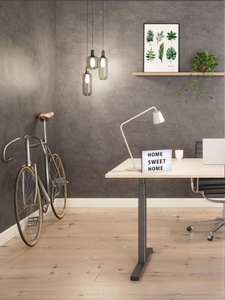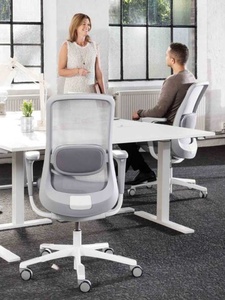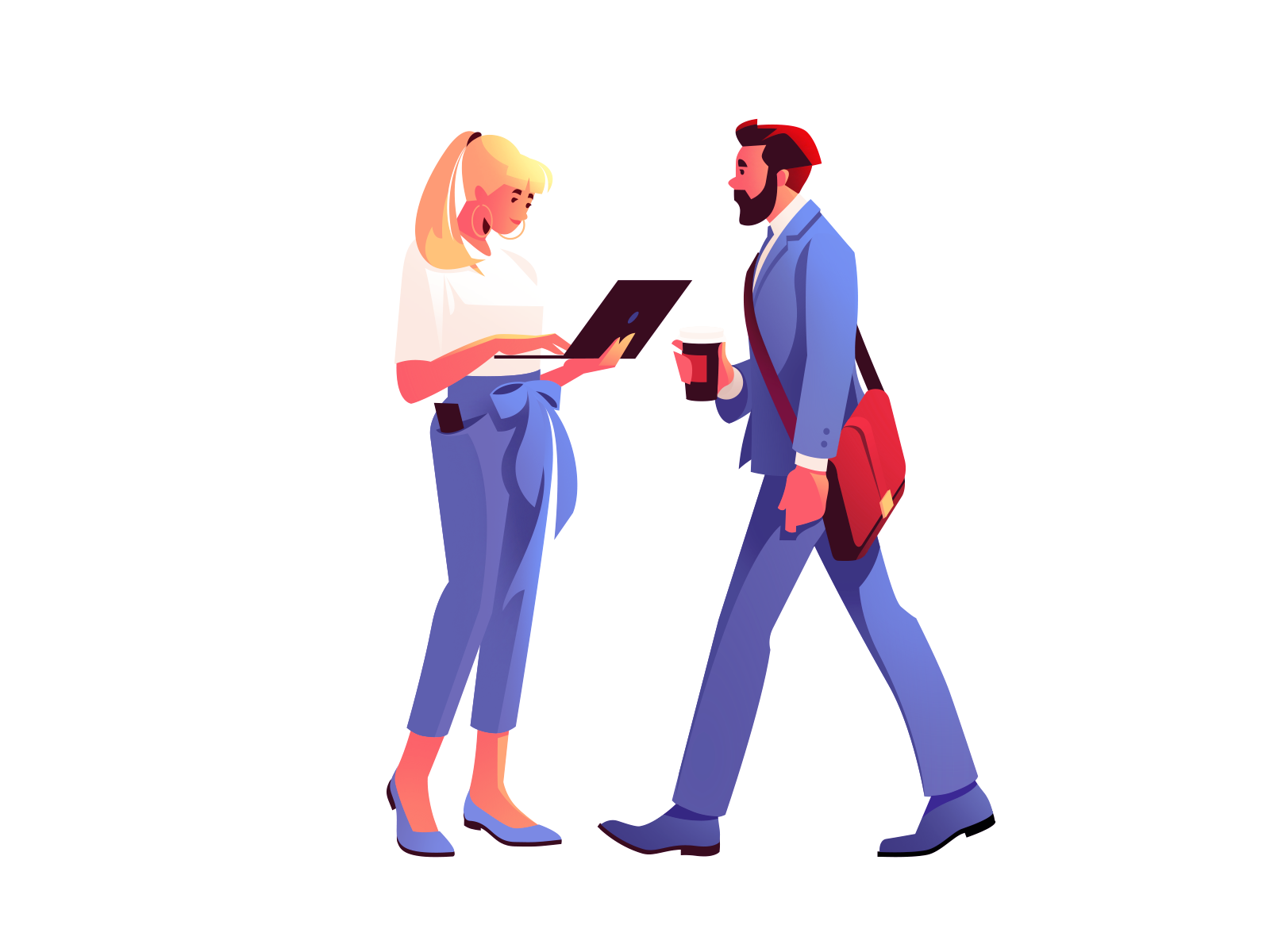To sit or to stand, that is the question.
Over the last few years, there has been a huge body of research linking sitting for long periods with negative health implications. The problem we have is, there are so many key parts of our lives that revolves around sitting. We have less reasons to move than ever before. The way we communicate has changed, there isn’t the same need to get up and meet people face to face anymore, we connect with our friends via text or a WhatsApp, we can have face to face chats on Skype or Facetime, so we don’t need to go out and meet our friends and family as much. We don’t need to leave the house to pick up the latest movie or to do our groceries anymore. We sit down to have breakfast, lunch and dinner and when we’re relaxing in the evening. The roads are getting busier and it’s not uncommon for people to drive or get public transport for 30-60 minutes each way for work. This is a lot of time to be sitting but now 43% of workers are now working in sedentary jobs, where they sit for the majority of the day. Many people can regularly sit an additional 6 hours or more in work and our bodies just aren’t designed to be stuck in a fixed working position. Humans, by our nature typically take the easier option and advances in technology are making it so easy not to move at all. We need regular movement continuously throughout our day to keep the blood pumping, increase oxygen intake and to keep the brain at optimum performance.
Standing all day is not the answer!
The increase awareness of the health risks around sitting has lead a lot of people to look to change their working habits and reduce the amount of time they’re sitting in day. This has saw a huge increase in the interest for “standing desks”. Let me be clear, standing all day is not the answer. The term “standing desk” is confusing to people looking to improve their health, as a “standing desk” would indicate, that the correct behaviour is to stand for as long as possible which is not the case. What health and ergonomics experts recommend is to vary between sitting and standing regularly, as well as getting up and moving regularly throughout the day. That is why the term “sit-stand desk” is more appropriate as we need to sit for some of the day and stand for other parts of the day and the more frequently we change between sitting and standing the better.
If you stand in one spot for too long, you won’t find that comfortable either, you can become tired and even sluggish. Your core will tire, and your posture will deteriorate, and people end up shifting their weight on one side to another, rather standing more balanced. You are also putting a constant load on you’re the joints in your legs and feet, where people feel they want to rest.
Research from the Institute of Work and Health, Canada even found there was a 2-fold risk of heart disease for people who were working in jobs that required them to be predominantly standing compared with people who were predominantly sitting. Replacing sitting with standing isn’t what is recommended either.
Is sitting for most the day the answer?
The simple answer is no, sitting for long periods is not natural for our body and we need regular movement and changes in our working position. Sedentary lifestyles are now considered to be one of the biggest health risks of the age of technology. Health risks associated with a sedentary lifestyle include increased risk of heart disease, high blood pressure, stroke, diabetes, breast and colon cancer, and depression.
Prolonged sitting increases the forces placed on the spine, particularly in the lower back where the neutral ‘S’ shape of standing turns into a more rounded ‘C’ posture. Prolonged sitting is regularly associated with a high incidence of back complaints, as well as increased muscle loading of the neck and shoulder muscles when sitting with the forearms unsupported. Muscles are healthiest when used and we need regular periods of activity throughout the day.
The World Health Organisation’s research has Ireland positioned to be the fattest nation in Europe by 2030. The nature of work is becoming more sedentary and inactivity during working hours is definitely a factor in us gaining weight as a nation. Research from Mayo Clinic looked into why some office workers gained weight and others didn’t. They tracked every subtle movement using sensors and the study found the participants who weren’t gaining weight were standing up or walking around for an average of 2.25 hours per day, even though they were all working in similar sedentary, desk-based roles. The ability to be able to stand at your workstation and be productive is a major advantage
But I’m very active outside of work. Surely, I’m fine?
Engaging in an active lifestyle will help keep you healthy, as exercising and standing can help reverse the negative effects associated with sitting to a degree. However, it was reported in the British Journal of Sports Medicine that “prolonged bouts of sitting and lack of whole body muscular movement as being strongly associated with obesity, diabetes, heart disease, cancer, and an overall higher risk of death, irrespective of whether moderate to vigorous exercise is undertaken.” The trip to the gym doesn’t seem to fully counteract the long periods sitting, so we also need to incorporate regular standing, walking and light throughout our 8 hours stuck in the office to manage our long-term health.
Are sit-stand desks beneficial?
Sitting is becoming an epidemic and substituting for standing only isn’t the answer. We need to mix it up. Sit for a bit, stand for a bit and always break it up with regular walking. We need to make work environments more active, but the problem is office workers tend to be most productive when at their desk. This is why sit-stand desks make sense, as it gives us the postural variation and changes of position that our body needs. flexible workstation designs that support an easy transition from sitting to standing as one solution to the sedentary office environment. Sit-stand working has been the norm in Scandinavia since the 90’s and it’s only really in the last few years that I’ve seen it as nearly expected in a lot modern Irish workplaces, which is great! Incorporating regular activity into our daily lives is proven to benefit our long term health and will help reduce the negative effects of sedentary behaviour. I foresee a time in the not so distant future where most companies will be providing sit-stand desks to employees.
KOS Ergonomics have always been innovators in the Irish workplace. This was never so obvious as when we introduced sit-stand desks to Ireland over 18 years ago. However, we know it’s not just about having the tools that enable you to do the right thing; you need to develop good working habits and look to make positive changes to your behaviours. Sitting is a learned behaviour and it’s going to take a conscious effort and some discipline to initially break the habit, but it will be worth it, and you’ll never look back once you do! Here are some tips to help you do so.
9 tips for office workers to incorporate more movement into their day:
- 1. Try to leave your desk every 30-45 minutes. Even for a minute or two. Short, frequent breaks are better than longer infrequent breaks.
- 2. Drink lots and lots of water – It’s vital to regularly rehydrate to help regulate our body’s temperature and maintain other bodily functions. It will also get you up and away from your workstation more regularly
- 3. Split up the water breaks and the bathroom breaks.
- 4. See if you can perform some of your tasks in a non-seated position. A sit-stand desk will make this easier and allow you to be more productive but get creative, see if there is any aspect of your role that can be done in a different position.
- 5. Don’t always email, IM or call your colleagues – walk over to their desk.
- 6. Take the stairs instead of the lift – These little bursts of movement can really help
- 7. Go for a walk at break and lunch times.
- 8. A sit-stand desk isn’t a substitute for leaving the desk and going for a walk. It complements walking. The more activity, the better!
- 9. Work towards standing or doing light activity for at least 25% of your working day.
To summarise whether it is best to sit or stand all day when working; the answer is neither. The more you can vary and change your position the better. A standing only desk is not the answer but a desk that allows you to vary between sitting and standing will have positive health benefits by offering more safe options of how to vary your working position. So, refer to
Remember, your next position is your best position!
Click here to see the sit-stand desks that we tested and found best available in the market















